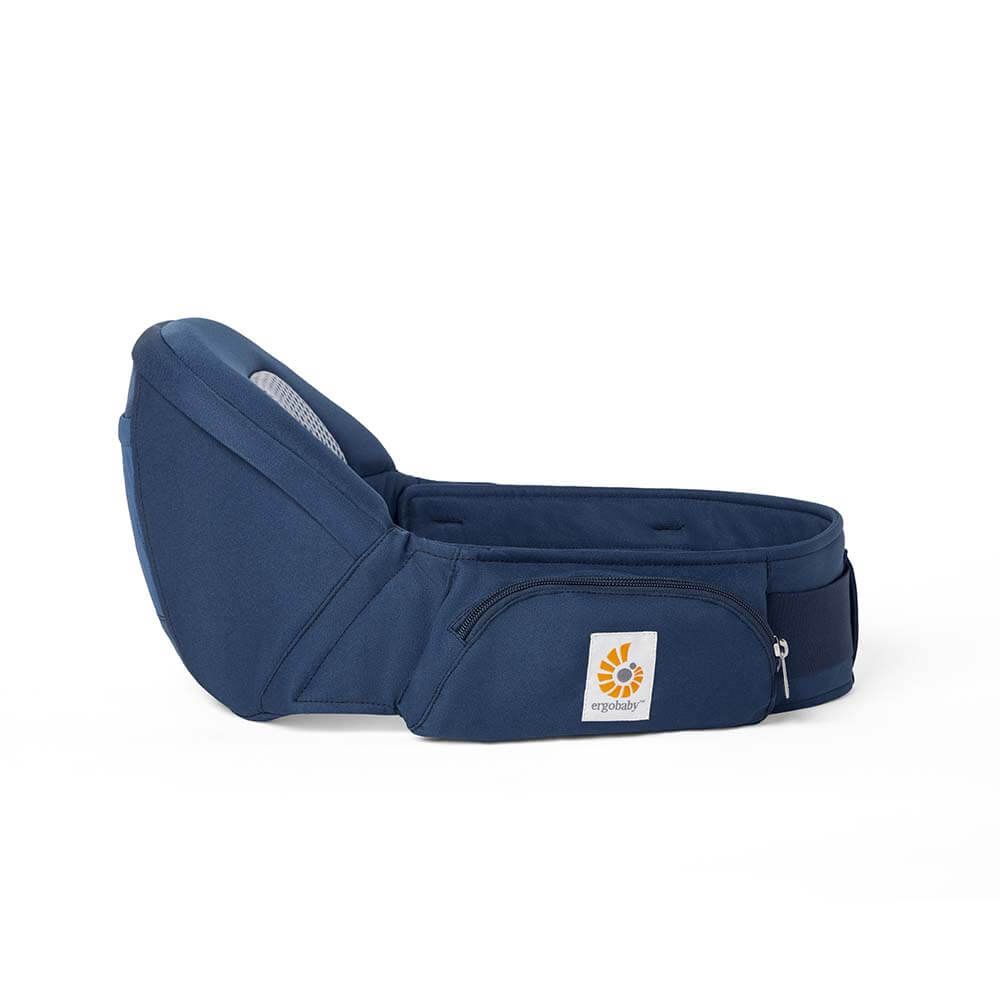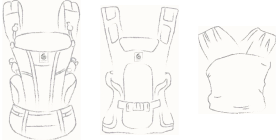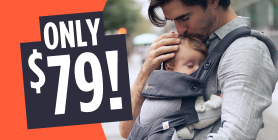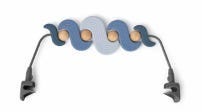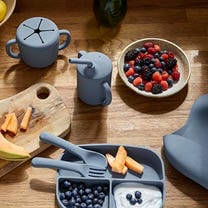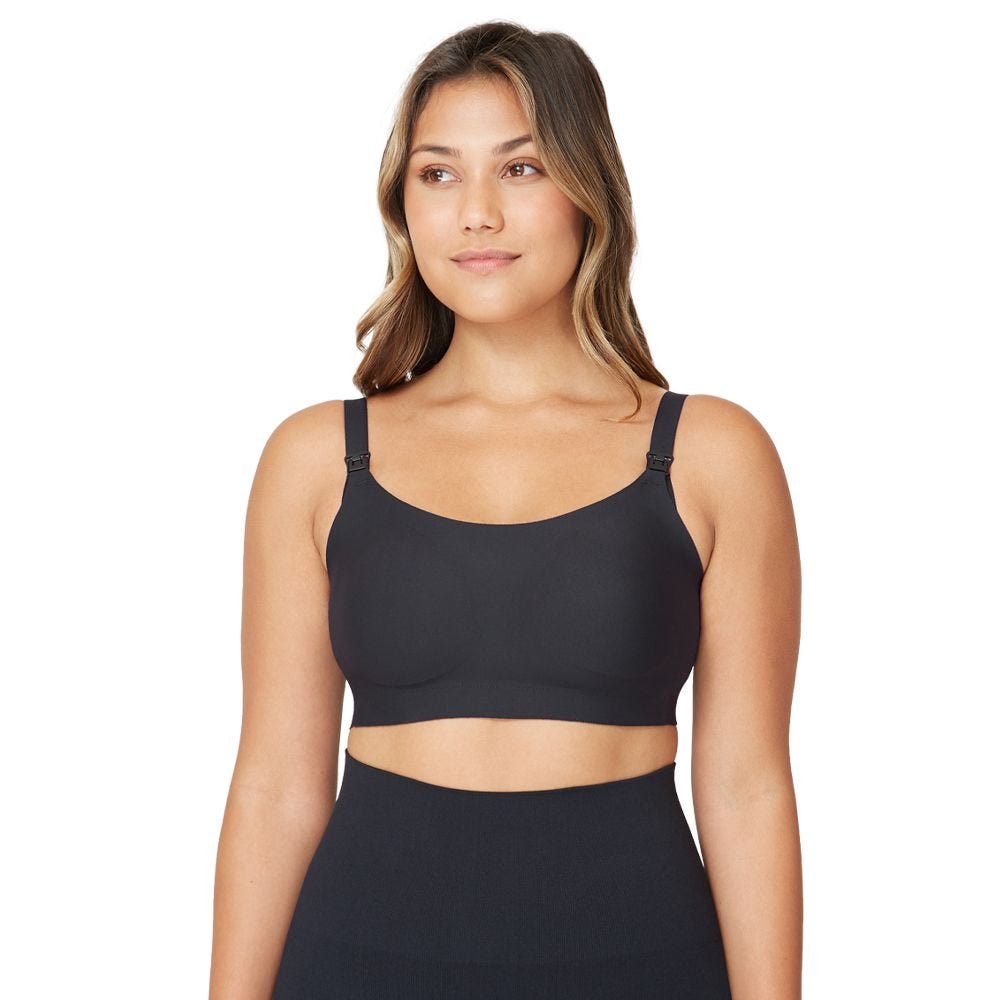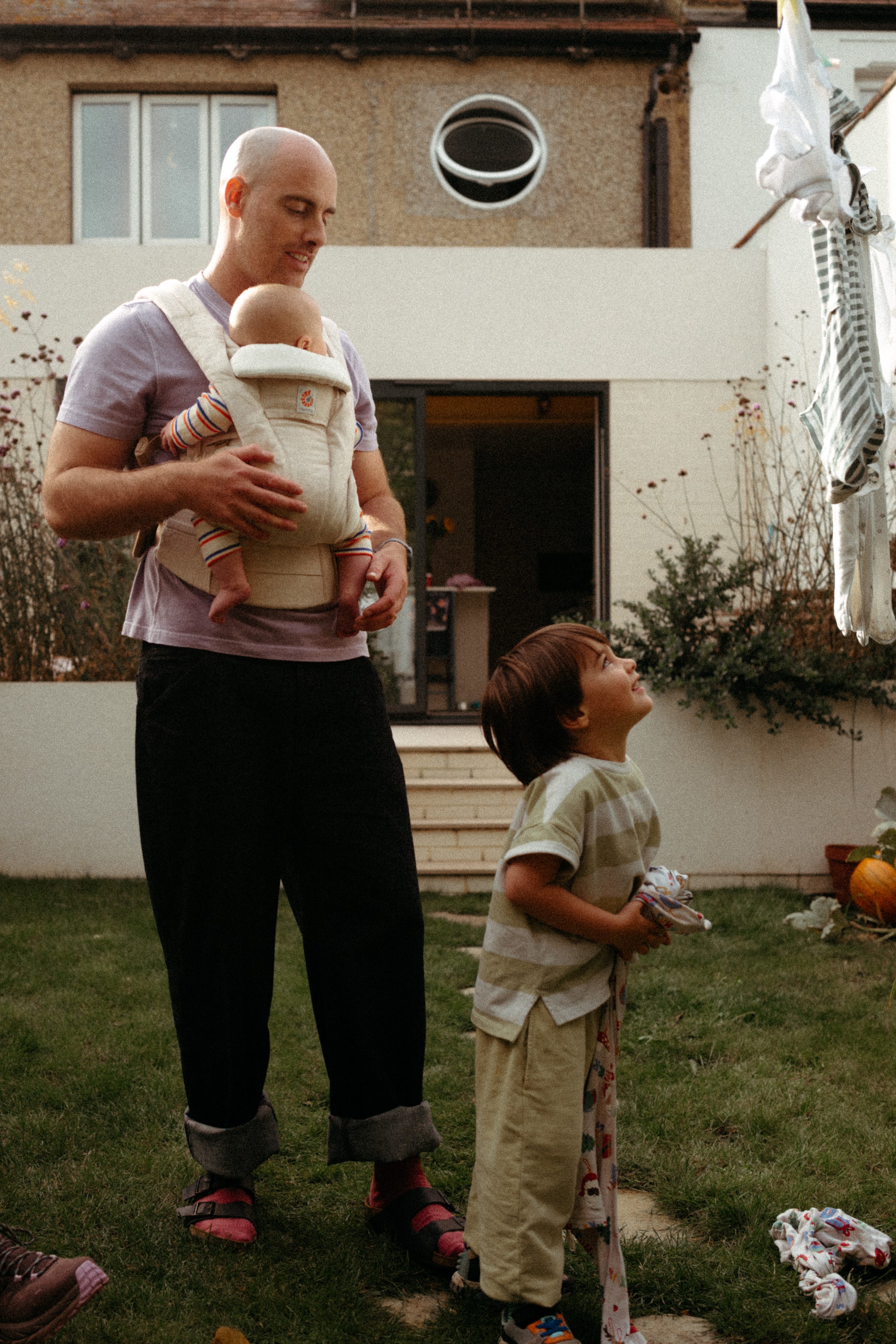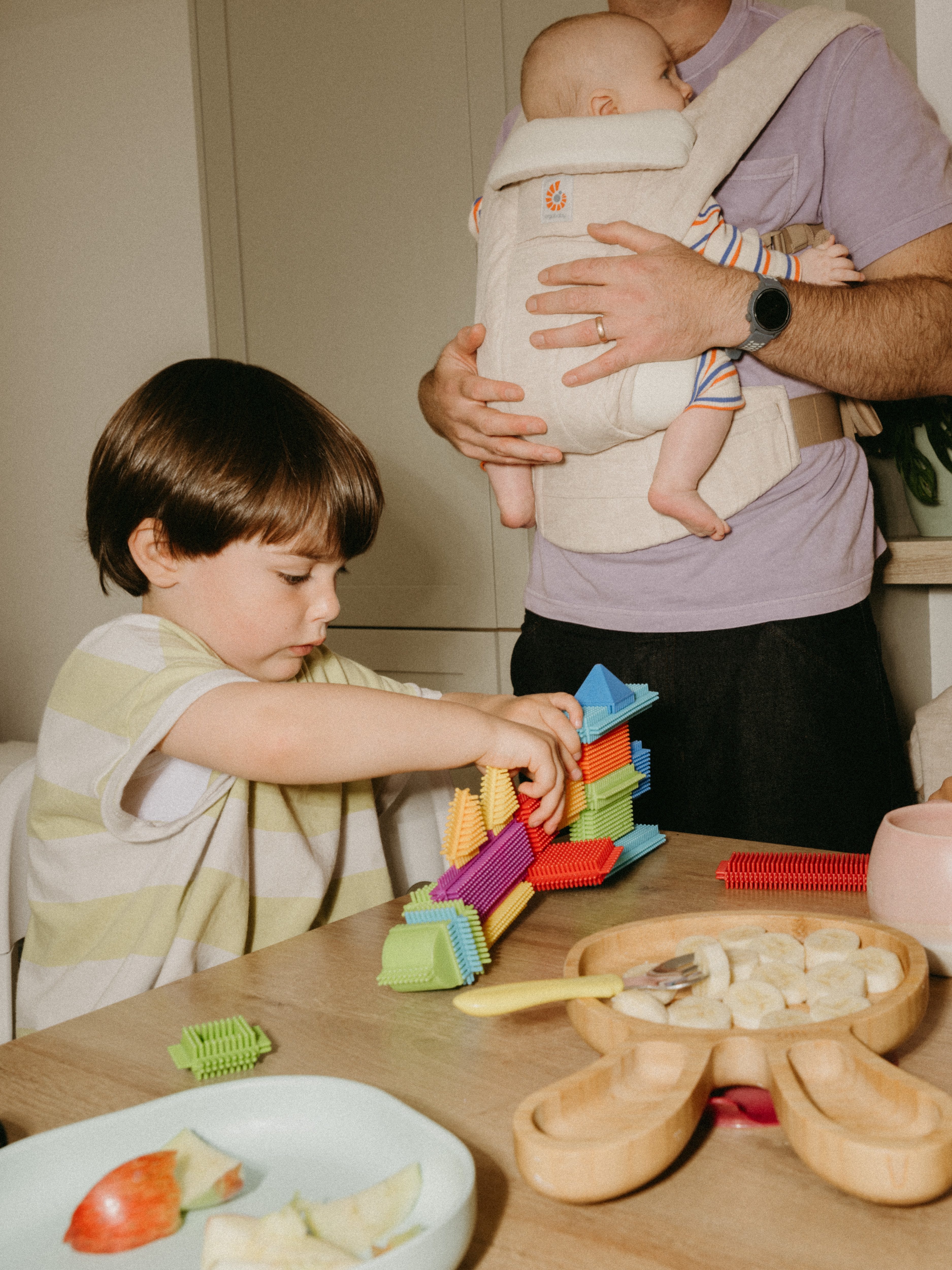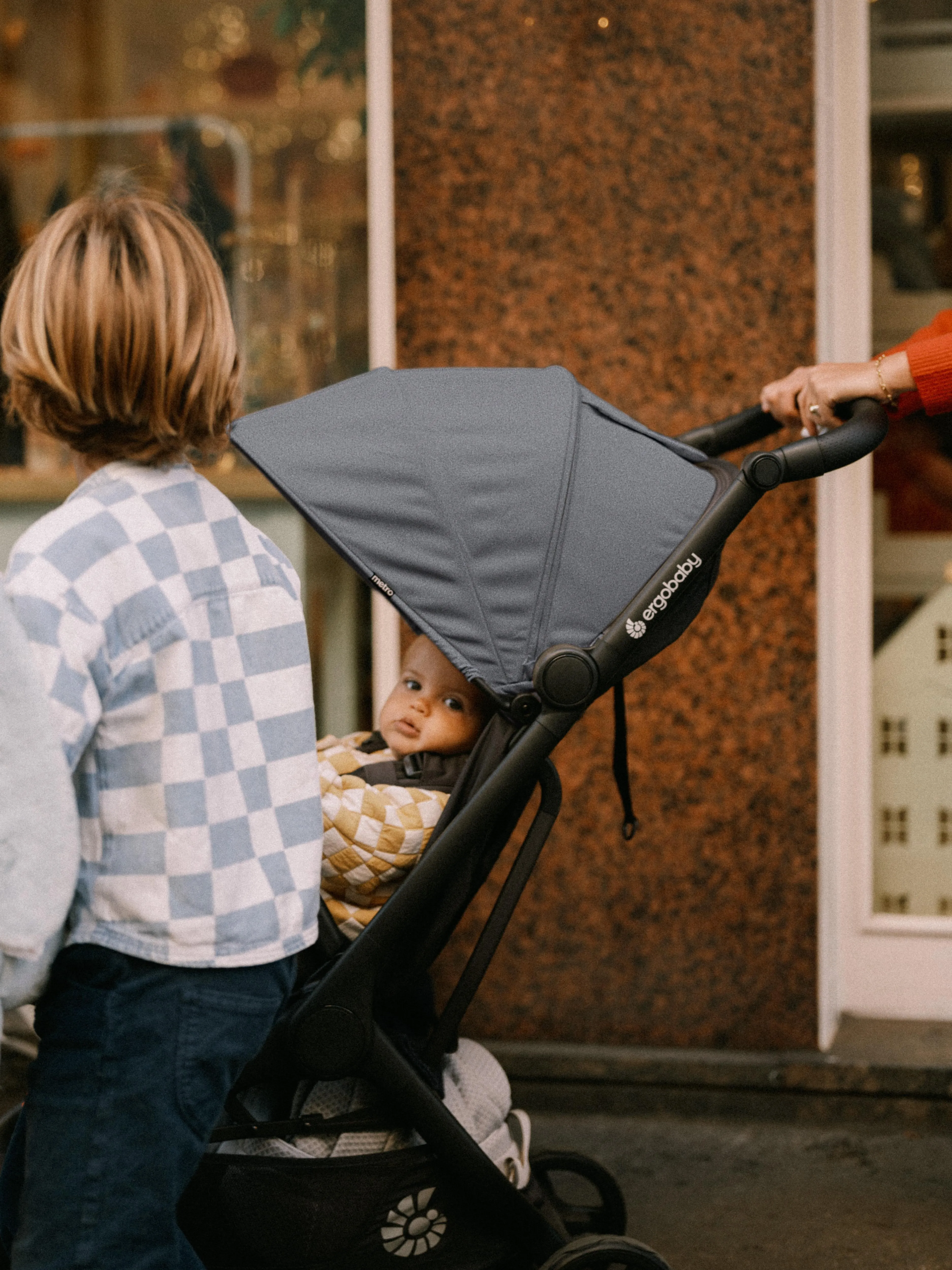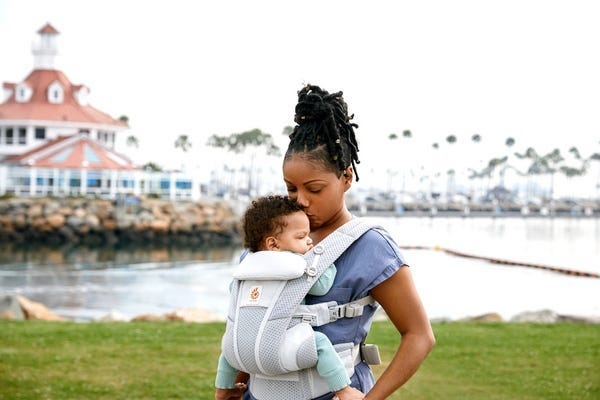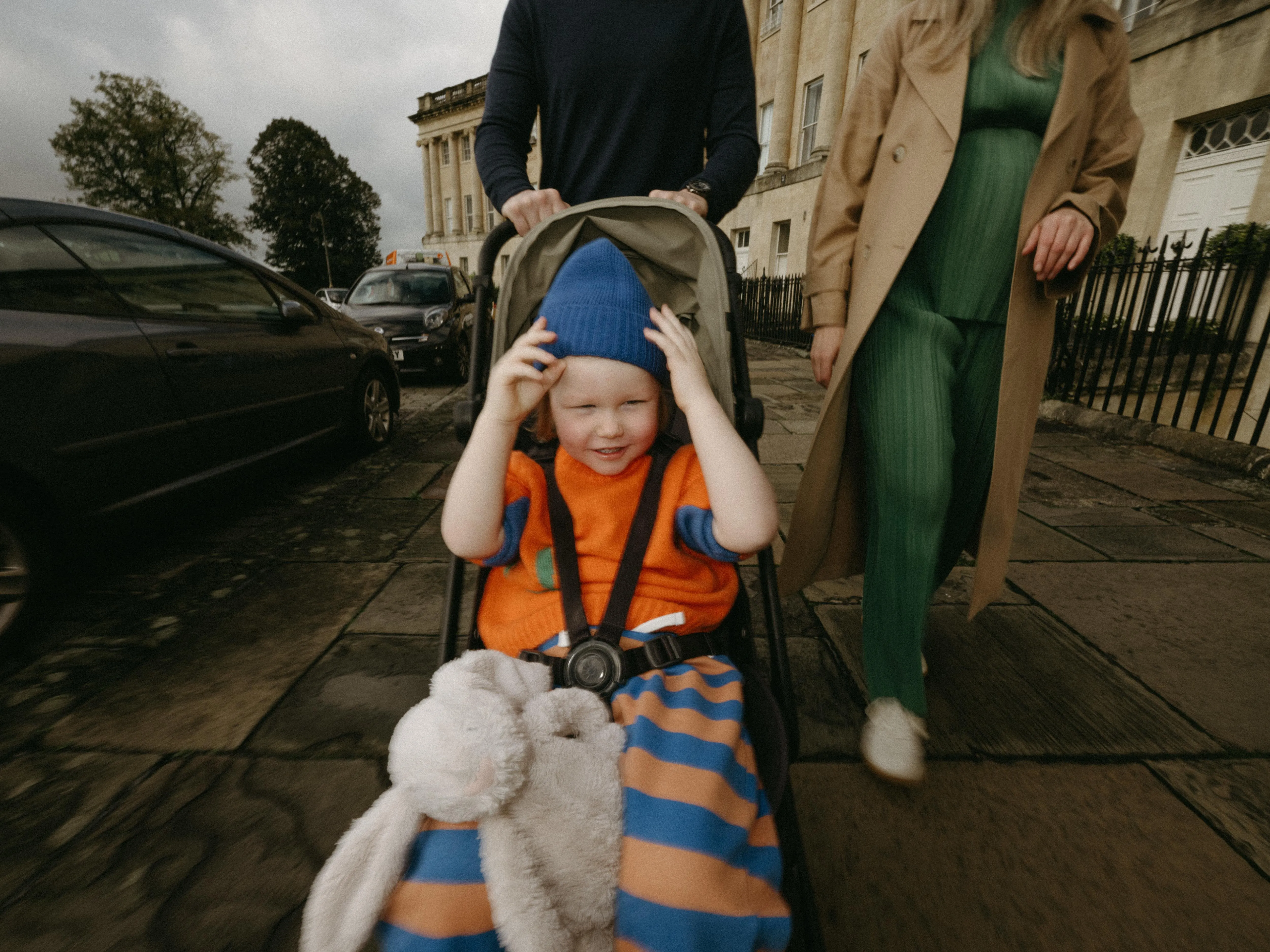Baby Gear
Forward-facing babywearing used to be a controversial choice. We're going to shed some light on the topic and dispel some old myths. Concerns over comfort and safety date back to a time when there were no ergonomic baby carriers available, and the baby carriers used to allow baby‘s legs to dangle when carried.
With the invention of our Omni carriers, the ergonomic forward-facing carry really shows what it can do. It makes parents' and caregivers’ everyday lives so much easier, promotes joint activity with your child in all environments, and is very practical.
All of our baby carriers have been tested and certified by both the AGR (Aktion gesunder Rücken e.V.) campaign for healthier backs and the International Hip Dysplasia Institute, offering you total peace of mind when it comes to ergonomic positioning in all carry positions.
Forward-facing is no exception, and as with any carrying position, there are a few things to consider—so here is an overview of the most important facts about carrying
How to Wear Baby in Hip Position
Have you tried a hip carry? This is a great option for babies over 6 months who want to see more of the world, but still cuddle in to mom or dad for comfort when they need to. It's also a great alternative to an outward facing carry.
Even better? Purchase a Hip Seat or Ring Sling! These carriers make the hip carry effortless and comfortable for baby and caregiver!
Emotional Benefits of Getting Outside
Spending time in nature with your baby can strengthen the bond between you. The simple act of holding your baby close, feeling their warmth, and sharing new experiences together can create strong emotional connections. It’s also a wonderful way to reduce stress and improve your mood. When my littles were extra fussy, I’d take a walk around the neighborhood. Even though I don't live in an area with trails and surrounded by nature, simply behind outside changed everything. A little vitamin D does wonders!
Cognitive Development
Nature is a sensory wonderland
How to Relieve Back Pain from Carrying a Baby
Carrying your baby is a beautiful way to bond, but it can also take a toll on your back if done incorrectly. Many parents experience back pain from carrying a baby when the carriers are used improperly. The constant lifting, holding, and feeding positions can lead to muscle strain and discomfort.
If you're wondering how to relieve back pain from carrying a baby, you’re in the right place! In this guide, we’ll share practical solutions for pain relief, tips for preventing back strain, and when to seek medical advice.
Tips for How to Relieve Back Pain from Carrying a Baby
If you’re experiencing mid back pain from carrying a baby, or pain in your lower or upper back, here are effective ways to find relief:
1. Adjust Your Babywearing Posture
Wearing your baby incorrectly can strain your spine. When using a baby carrier, ensure:
✔️ Your baby is high enough to kiss the top of their head
✔️ Their legs are in an "M" position, with knees
Ergobaby Baby Carriers for Plus Size Parents: How to Find the Right Carrier
Babywearing for Every Body
One of the greatest things about babywearing is that it’s for every baby and every body. Finding the best baby carrier for plus size parents is all about fit, adjustability, and comfort—regardless of body shape or size.
At Ergobaby, we understand that every body is unique, which is why we’ve designed our carriers to be inclusive, adjustable, and ergonomic. Whether you’re looking for a plus size baby carrier for everyday errands, hiking, or snuggling your newborn at home, we’ve got you covered.
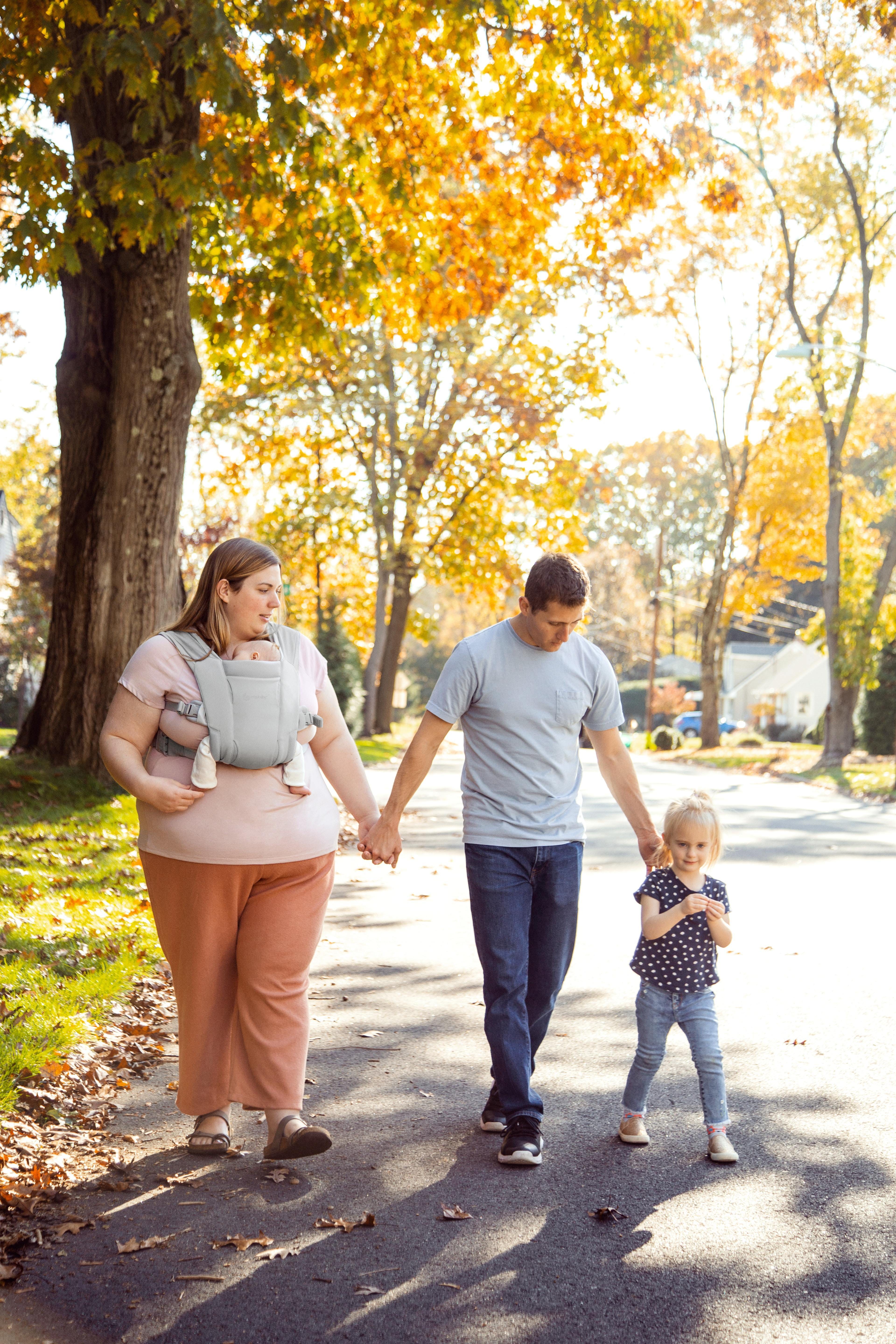

What to Look for in a Plus Size Baby Carrier
When choosing the best baby carriers for plus size moms or any plus size parent, here are a few key factors to consider:
1. Waistband Size & Adjustability
A longer waistband ensures a comfortable and secure fit. Since 2012, Ergobaby has increased the webbing length on all baby carriers to 55 inches, making our carriers more size-inclusive than
Baby Wrap vs Carrier: Find the Right Babywearing Option for You
Choosing between a baby wrap vs carrier can be a big decision for parents who want to keep their little one close while staying hands-free. There are so many reasons to wear your baby, but choosing the right carrier can be overwhelming. Each option offers unique benefits, and the right choice depends on your lifestyle, baby's age, and personal comfort preferences.
In this guide, we'll compare baby wraps vs carriers, explore their pros and cons, and help you decide which one (or both) best suits your needs.
What are the different types of baby carriers?
Baby carriers come in different styles, each designed to offer a secure and comfortable way to carry your baby. While baby wraps fall into their own category, structured baby carriers are more versatile and user-friendly.
Here are the main types of baby carriers:
1. Soft-Structured Carriers (SSCs)
These are the most popular and ergonomic carriers, featuring padded
Hold on tight everyone! Because we're going full steam ahead with new products! Having just introduced you to our new and improved Omni baby carrier, the Omni Deluxe, we are now launching another new product: our Ergobaby Metro 3, the crème de la crème of compact travel strollers. The Metro 3 is lightweight, maneuverable and so ultra-compact that it fits into any car boot and most train and plane luggage racks. We are totally convinced that it’s the most comfortable and best travel stroller in the world and we’re sure we can convince you too in today's blog.
Metro 3 vs Metro+ - Even Better Thanks to Your Feedback
The Metro 3 is the third generation of our popular compact stroller, and it gets better every time. And it’s all thanks to you. (And our dedicated team of product designers who work their socks off to take your feedback and bring it to life, along with the coolest new innovations in stroller technology.) Because you are the ones who use our products day in, day out and test
Stroller vs. Baby Carrier: When to Use Each
As a parent, one of the biggest questions you’ll face when heading out with your little one is: Should I use a stroller or a baby carrier? Both options have their perks, but knowing when to use each can make all the difference in comfort and convenience.
Whether you're strolling through the park, navigating a crowded airport, or running errands, choosing between a baby carrier vs. stroller depends on your needs, your baby's age, and your lifestyle. Let’s explore the benefits of both so you can decide what works best for your family.
Emotional Benefits of Getting Outside
Spending time in nature with your baby can strengthen the bond between you. The simple act of holding your baby close, feeling their warmth, and sharing new experiences together can create strong emotional connections. It’s also a wonderful way to reduce stress and improve your mood. When my littles were extra fussy, I’d take a walk around the neighborhood. Even though I
10 Reasons to Take a Travel Stroller on Vacation with Kids
Who is ready for some sun? We certainly are! So, if you’re busy planning your first trip with baby or your next vacation with kids, then you’re probably thinking about what you need to take with you and what you need to buy before then? If that’s you then this blog is exactly what you need! Because today we're giving you ten reasons why a travel stroller is an absolute must-have when you’re travelling with a baby and why the new Ergobaby Metro 3 is the very best choice.
The Key to a Relaxed Holiday with Baby: The Travel Stroller
Do you want to be prepared for anything a vacation with kids can throw at you? Then a travel stroller is really worth its weight in gold. Of course, a baby carrier is a must have and, small as it is, there’s probably plenty of room for it in your luggage. It can be more of a debate though as to whether a travel stroller is worth bringing. But the new Ergobaby Metro 3 makes that an easy choice as
The Stroller Dilemma: Finding the Perfect Fit
Choosing the right stroller is a major decision for new parents. With so many options available, it can feel overwhelming trying to figure out the answer to the question: “What stroller should I get?” Do you need a stroller for newborns, a compact stroller for easy travel, or a stroller that grows with your baby?
At Ergobaby, we understand these challenges, which is why we designed the Metro 3 Stroller—a perfect balance of comfort, convenience, and compact design. Whether you're strolling through the city, hopping on a plane, or simply running errands, the Metro 3 is built to meet your needs.
But before we dive into what makes the Metro 3 Stroller a game-changer, let’s cover the basics of how to choose a stroller that’s right for your family.
How to Wash an Ergobaby Baby Carrier: Instructions & Tips
When your baby carrier is in daily use, it's bound to pick up spills, stains, and everyday messes. Whether it’s spit-up, snack mishaps, or a diaper emergency, keeping your Ergobaby carrier clean is key to maintaining its quality and comfort for both you and your baby.
In this guide, we’ll walk you through how to spot clean, machine wash, and properly maintain your carrier to keep it fresh and functional.
How often can I wash my carrier?
Ergobaby carriers are designed to be durable and easy to clean. While you don’t need to wash your carrier after every use, spot cleaning stains or areas of frequent contact is recommended to minimize wear and tear. We also recommend washing your carrier once before its first use. After that, only machine wash when absolutely necessary to protect the environment and extend the life of your baby carrier.





